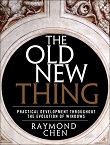Regarding the “ My AI Skeptic Friends Are All Nuts” article¹. No strong opinion about the article, but I was struck by it as an example of a certain rhetorical style that seems very effective with programmers. Some elements:
* What I think of as “pugnacious pragmatism.” “Other people are concerned with airy-fairy things; I care about getting the job done.” I confess I’ve used this myself. (1/6)






